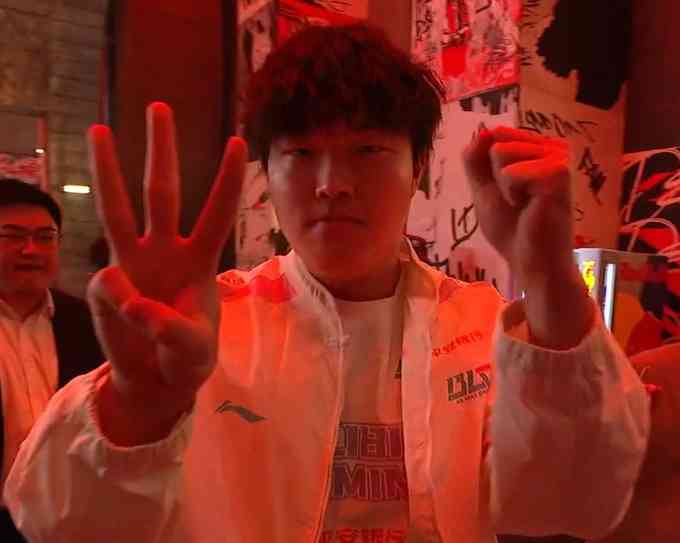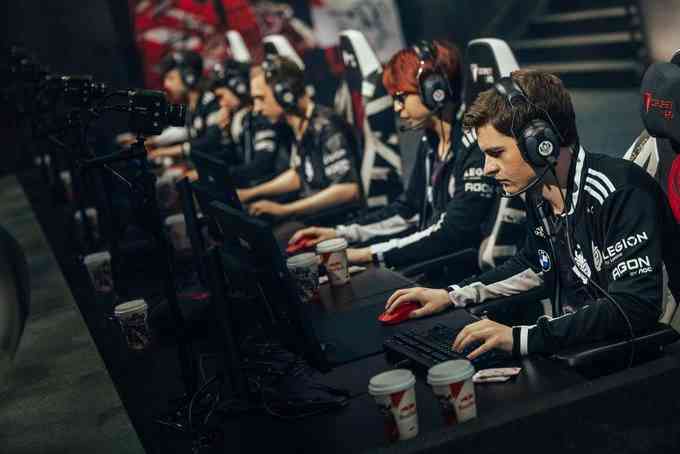With a draw that forced the LCS and LEC to compete against the LCK and LPL, the West went 2-18 in its head-to-head versus Korea and China in a completely one-sided affair. Most of these defeats bore the same pattern, thus revealing how far the West lags behind League’s two best nations.
Major regions, major gaps
The former MSI format gave way to Western delusions. The LEC and LCS champions generally managed to distillate enough copium against so-called minor regions teams to come up against the Chinese or Korean top seed with positive narratives at the later stages of the tournament. Of course, they were then crushed, but they tried, and they didn’t fly home with a 0% win rate. The new format, on the contrary, exposes even more precisely the gap between Western and Korean/Chinese teams.
Currently, except for G2 and Golden Guardians, who entered through the Play-In, every other LCS and LEC team enters the competition against an LCK or LPL top team, and if they lose, they are already one series away from elimination.
This is not to criticize the new format. On the contrary, apart from the fact that it evidently reproduces regional finals too early in the tournament, the double-elimination bracket represents an exciting wind of change for a tournament that sparked heavy criticism. Moreover, this format illuminates a well-known fact way earlier in the season than usual; Western teams lag far behind Korean and Chinese teams. Thus, hopefully, the subsequent Western meltdown we witnessed should push them to act.
 BLG Bin was so confident after prevailing over C9 in the first game that he called a 3-0 sweep. Credit: LoL Esports
BLG Bin was so confident after prevailing over C9 in the first game that he called a 3-0 sweep. Credit: LoL EsportsEveryone knows there are cultural and structural reasons why players from some countries are way better than others. Some of these reasons have nothing to do with esports, let alone League of Legends. But there is one thing LEC and LCS staffs should be focusing on in the short term ‘ as they obviously are not all here to revolutionize League esports in the long run anyway ‘ following this harsh MSI first round; how can a European or a North American organization defeat a Korean or a Chinese team in more than just one coincidental series in 2023?
Similar loss patterns
First, the LEC attempted to help its teams perform better at international tournaments. Riot Europe enacted a new format that generated more best-of-threes amongst European teams, which is the norm in the LCK and the LPL. One of the identified Western weaknesses was a far lower playtime and the number of games played during a season compared to their Asian counterparts. Coming into MSI 2023, both MAD Lions and G2 had played an average of 51 games. That compares well to the average of 57.75 games played by the four Asian teams that qualified for the Main Event. (Knowing that Bilibili Gaming’s 68 games to climb the LPL loser bracket distorts the statistics). On the other end of the spectrum, Cloud 9 and Golden Guardians had participated in 30 and 35 games, respectively.
Yet, while the LEC new format was supposed to send European teams to MSI in a better shape, they were crushed just the same as usual ‘ minus 2019-2020 G2 ‘ and the same as the North Americans. Even worse, C9 and GG arguably offered better competition than MAD, whose sub-17-minute defeat will outlast their fantastic Game 1 early plays in everyone’s memory. Even though the LEC format change aims at a longer term than that, it shows that grouping the West remains relevant. This impression is reinforced by the fact that they all tended to lose against LCK and LPL teams in a similar manner.
For Western teams, the scenario often went as follows. They put up a good fight with an even, if not an early winning game. However, they failed to coordinate in punishing their opponents appropriately to start a proper snowball, showing too much respect. This made them hit a glass ceiling around the 14th minute, where the dynamics drastically changed in favor of the Asian team. In the background, constant little macro losses where Western ‘ especially LCS ‘ teams conceded waves for free occurred. Then, the unmatchable individual and team fighting skill gaps closed the game. And then, their nexus blew up.
One can even mention the baron flipping as a recurring pattern. However, although both MAD Lions’ and Cloud 9’s flips have been memed the same, these mistakes were of different breeds. MAD had no interest in 50-50ing a baron with a game in such a state ‘ the right call was to stop hitting it and turn this into a teamfight. Whereas C9 did not make a wrong decision, the zoning execution was poor (Jang “Emenes” Min-soo’s Galio should have isolated the jungler), and Robert “Blaber” Huang failed to use Kindred’s ultimate to counter Peng “XUN” Lixun’s smite.
DNA diff?
2-18 is harsh. Yet, this pattern shows evolution and, thus, hope. This was actually not the way. Western teams were losing against Korean and Chinese teams five years ago. Most early games were even or won (the West only averages a 1,000-gold deficit at the 14-minute mark in these 13 games) or at least played proactively, result from efficient early game compositions and playstyles. Meaning it’s a good thing that LCS and LEC teams didn’t get shaky and dared to play the game they usually do. It’s a good thing that they were proactive and aggressive. Unfortunately, the aforementioned skill gap ‘ which cannot just be closed in a mid-season preparation ‘ makes it insufficient to topple LCK and LPL opponents.
Indeed, the practice environment and the quality of solo and champions queues prevent Western players from catching up on Korean and Chinese players’ fundamentals. This is especially true in the short run, but it might well be the case in the long term and perhaps forever. So, in order to win a series against them in 2023, Westerners have to focus on other areas. With that in mind, there probably are less than a handful of solutions.
One hypothesis would be that Western teams should seek an even more early game-oriented, aggressive playstyle so that they never play teamfights without an 8 to 10,000-gold advantage. Another idea would be to show more creativity and pick unconventional drafts to unsettle players who come from meta-defining leagues. To some extent, this is what G2, whose drafts were overall exciting, has tried with, for instance, a Darius in Game 1. This option feels like the most reachable one on a short-term basis. It would, however, require a level and amount of work from analysts never seen before ‘ a monumental achievement since G2 was already well prepared and still severely lost. To take it the completely opposite way, but still, with the aim to avoid teamfights, another hypothesis would be to go and try to be better at scaling and cross-mapping to find checkmates on the Rift. Although this may lead to those infamous defeats where the Western team seems to lose without having tried anything.
 G2, the West’s only team to have brought a game home, was and remains Europe’s best hope of success. Credit: LoL Esports
G2, the West’s only team to have brought a game home, was and remains Europe’s best hope of success. Credit: LoL EsportsWhat if it was in the heads?
That being said, maybe a part of the solution is in the heads more than in the hands. We know that China’s and Korea’s dominance has cultural and multifactorial grounds (some of which transcend esports), but in order to perform better in the short term, something can be done about this inferiority complex, too.
There is a sensible divinization of LCK and LPL teams among Western observers, staffs and ultimately players that generates fear which in turn is partly responsible for the recurrent throws. As proof of this is the fact that even with great teamfight compositions, LCS and LEC teams don’t manage to set up good teamfight positions. The very rare 5-vs-5 teamfights that were won last week almost exclusively came from wild chases or mispositioning by Asian teams.
The thing is, Chinese and Korean organizations are not immune to mistakes. If we can criticize Western teams for respecting too many Asian assaults, then it means explicitly Asian players regularly go too far. In terms of macro inaccuracies and taking random skirmishes that can get a positive response from Westerners, BLG has been quite generous. This was to be expected, considering their underdog status coming from the LPL’s loser bracket. But still. During the LCK Spring split, T1 also showed running-it-down moments.
Chinese and Korean players also made itemization errors during this MSI’s first week. For example, we have seen Gen. G’s support Yoo “Delight” Hwan-joong buying an Oblivion Orb and completing the Chemtech Putrifier as Lulu against G2, whereas her Pix on an ally doesn’t proc Grievous Wounds. Similarly, in BLG versus C9, Luo “ON” Wen-Jun went for Sorcerer’s Shoes as Nami. This was a pretty bad choice considering that her E’s and the Imperial Mandate second proc’s bonus magic damages do not depend on Nami’s statistics but on the ally’s.
These mistakes are rare, and they can be minor. But they go on to prove that LCK and LPL players are not semi-gods. More importantly, they can be and could have been, exploited by Western teams to get an edge, and then perhaps a game or even a series, over them.
Despite the West wasn’t destined to go much further in MSI 2023, be sure to keep up with our LoL portal for the conclusion of the exciting event, with Lee “Faker” Sang-hyeok in particular looking for this third MSI trophy.



